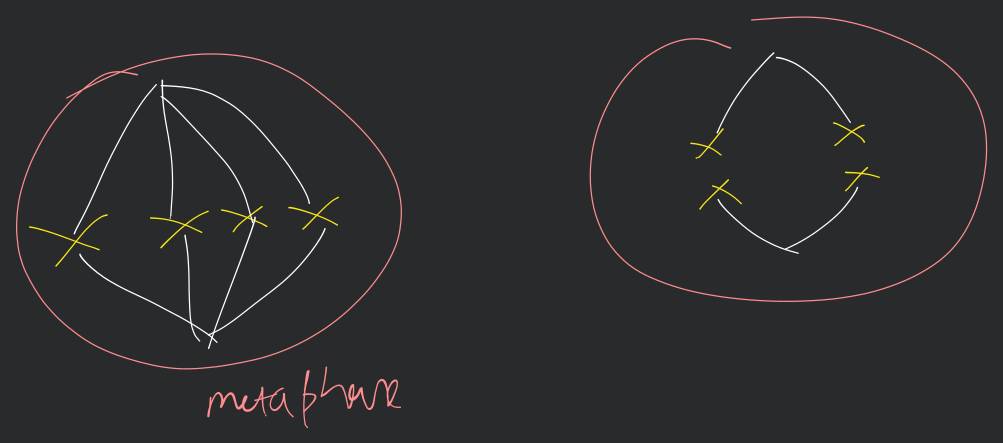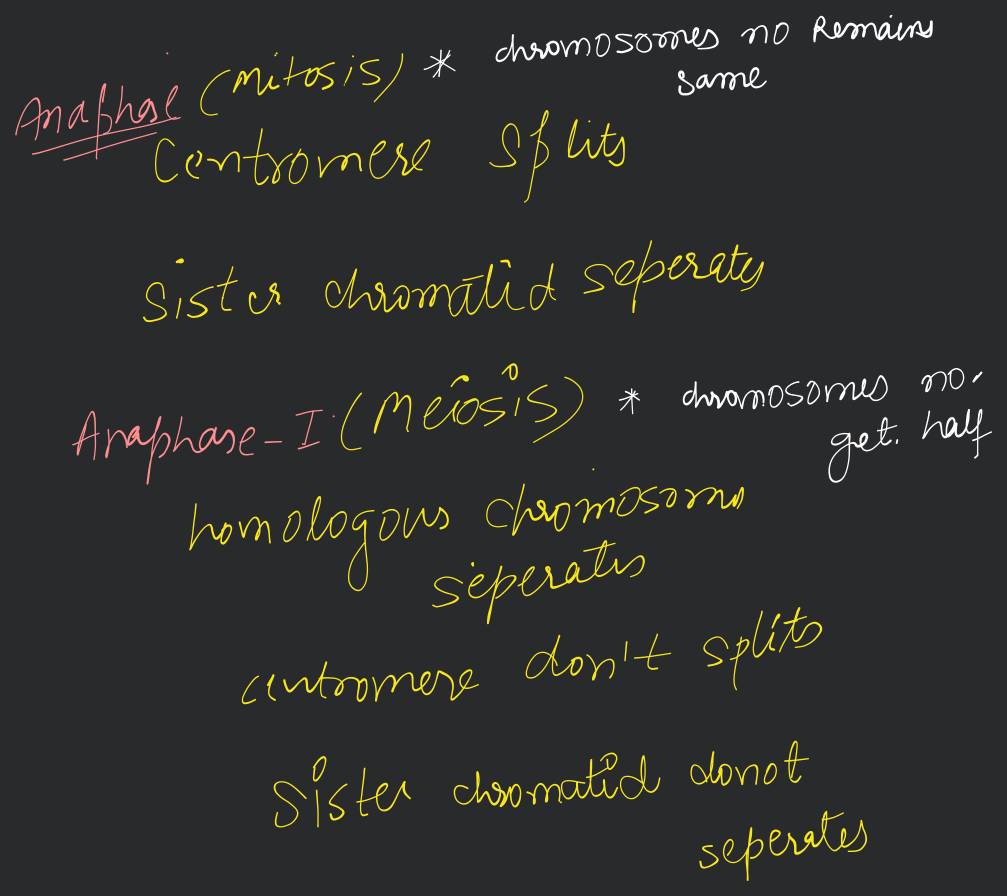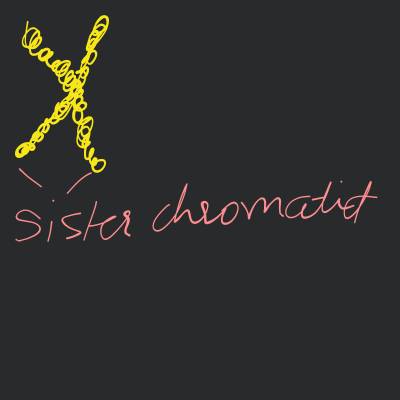Question
Medium
Solving time: 4 mins
Distinguish anaphase of mitosis from anaphase I of meiosis.
Found 3 tutors discussing this question
Discuss this question LIVE
13 mins ago
 Text solution
Text solution Verified
Verified
| Anaphase of mitosis | Anaphase I of meiosis |
| 1. The centromere of every chromosome divides. | 1. The centromere do not divide. |
| 2. Separation of sister chromatids takes place. | 2. Homologous chromosomes are separated. |
| 3. Only one chromatid of every chromosome moves to the pole. | 3. Each homologous pair of chromosomes moves to the pole with both the chromatids. |
| 4. The chromatids moving to one pole are genetically identical to those moving to the opposite pole. | 4. The chromosomes moving to one pole are not genetically identical to those moving to the opposite pole. |
Was this solution helpful?
6
Share
Report

One destination to cover all your homework and assignment needs
Learn Practice Revision Succeed

Instant 1:1 help, 24x7
60, 000+ Expert tutors

Textbook solutions
Big idea maths, McGraw-Hill Education etc

Essay review
Get expert feedback on your essay

Schedule classes
High dosage tutoring from Dedicated 3 experts
Practice more questions from Biology (NCERT)
Practice questions from Biology (NCERT)
Question 1
Find examples where the four daughter cells from meiosis are equal in size and where they are found unequal in size.Hard
Question 2
Describe the following: Medium
(a) Synapsis
(b) Bivalent
(c) Chiasmata
Draw a diagram to illustrate your answer.
Practice more questions from Cell Cycle and Cell Division
Practice questions on similar concepts asked by Filo students
Question 1
An animal pollinator may receive _____ when it visits a flower of a coevolved plant (choose all that apply).a. pollenc. pesticidesb. nectard. fruitQuestion 2
Describe the possible outcome of a PCR experiment in which (a) one of the primers is inadvertently omitted from the reaction mixture and (b) one of the primers is complementary to several sites in the starting sample.Question 3
events in the life of a plant. Broadly, development is considered as the sum of growth and differentiation. Development in plants (i.e., both growth and differentiation) is under the control of intrinsic and extrinsic factors. The former includes both intracellular (genetic) or intercellular factors (chemicals such as plant growth regulators) while the latter includes light, temperature, water, oxygen, nutrition, etc.
13.4 Plant Growth Regulators
13.4.1 Characteristics
The plant growth regulators (PGRs) are small, simple molecules of diverse chemical composition. They could be indole compounds (indole-3-acetic acid, IAA); adenine derivatives ( -furfurylamino purine, kinetin). derivatives of carotenoids (abscisic acid, ABA); terpenes (gibberellic acid, ) or gases (ethylene, ). Plant growth regulators are variously described as plant growth substances, plant hormones or phytohormones in literature.
The PGRs can be broadly divided into two groups based on their functions in a living plant body. One group of PGRs are involved in growth promoting activities, such as cell division, cell enlargement, pattern formation, tropic growth, flowering, fruiting and seed formation. These are also called plant growth promoters, e.g., auxins, gibberellins and cytokinins. The PGRs of the other group play an important role in plant responses to wounds and stresses of biotic and abiotic origin. They are also involved in various growth inhibiting activities such as dormancy and abscission. The PGR abscisic acid belongs to this group. The gaseous PGR, ethylene, could fit either of the groups, but it is largely an inhibitor of growth activities.
13.4.2 The Discovery of Plant Growth Regulators
Experiment used to demonstrate that tip of the coleoptile is the source of auxin. Arrows indicate direction of light
Interestingly, the discovery of each of the five major groups of PGRs have been accidental. All this started with the observation of Charles Darwin and his son Francis Darwin when they observed that the coleoptiles of canary grass responded to unilateral illumination by growing towards the light source (phototropism). After a series of experiments, it was concluded that the tip of coleoptile was the site of transmittable influence that caused the bending of the entire coleoptile (Figure 13.10). Auxin was isolated by F.W. Went from tips of coleoptiles of oat seedlings.Question 4
C. The square root of 25 is 5. true
D. The equation 2x + 3 = 7 has a solution. true
E. The word "definitely" is spelled correctly. false
F. The sentence "I went too the store" is grammatically correct. false
G. The symbol for the element sodium is Na. true
H. The formula for calculating the area of a rectangle is length x width. true
I. The sum of 2 and 2 is 5. false


Stuck on the question or explanation?
Connect with our Biology tutors online and get step by step solution of this question.
231 students are taking LIVE classes
| Question Text | Distinguish anaphase of mitosis from anaphase I of meiosis. |
| Updated On | Dec 6, 2023 |
| Topic | Cell Cycle and Cell Division |
| Subject | Biology |
| Class | Class 11 |
| Answer Type | Text solution:1 Video solution: 1 |
| Upvotes | 130 |
| Avg. Video Duration | 7 min |







